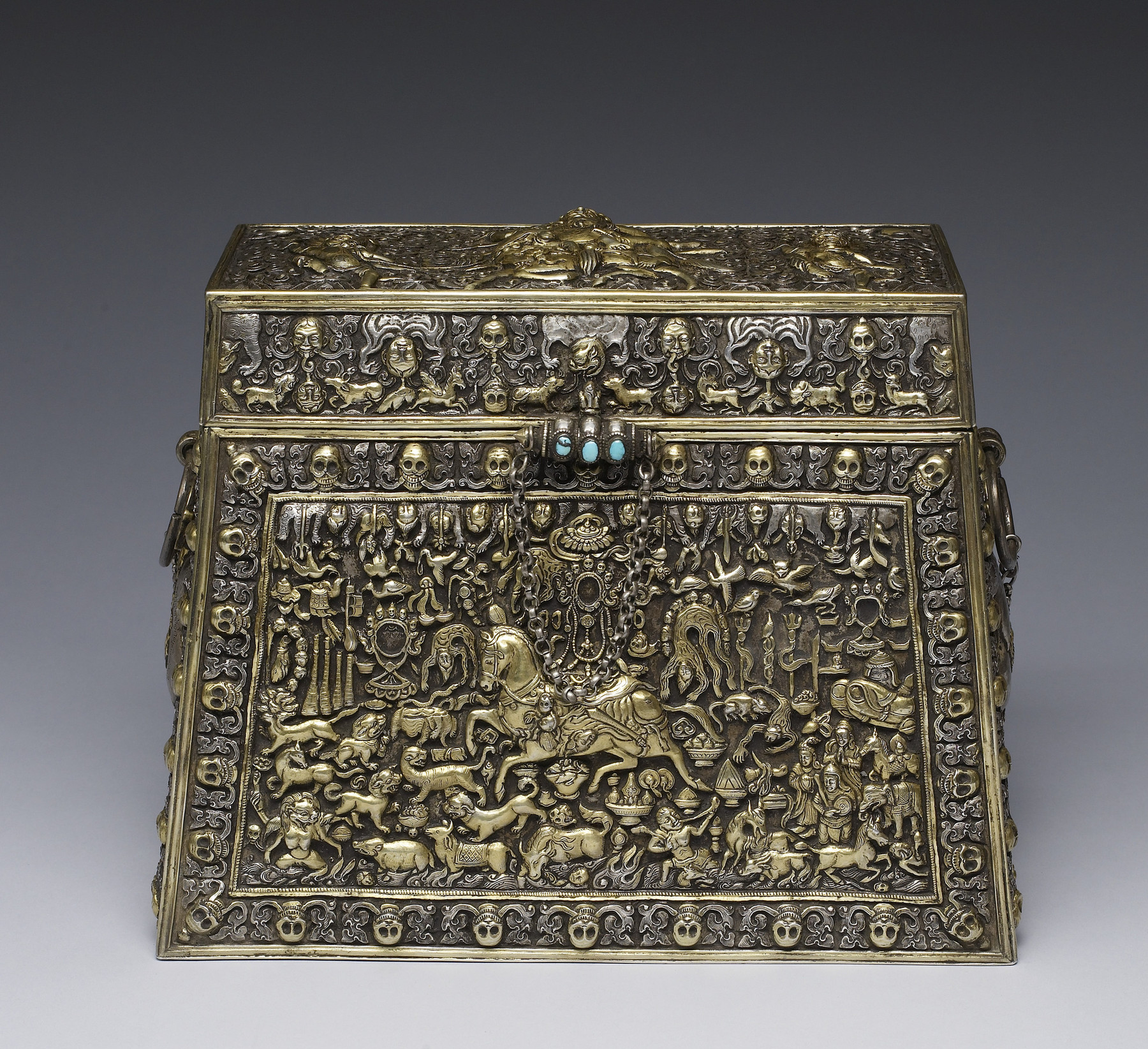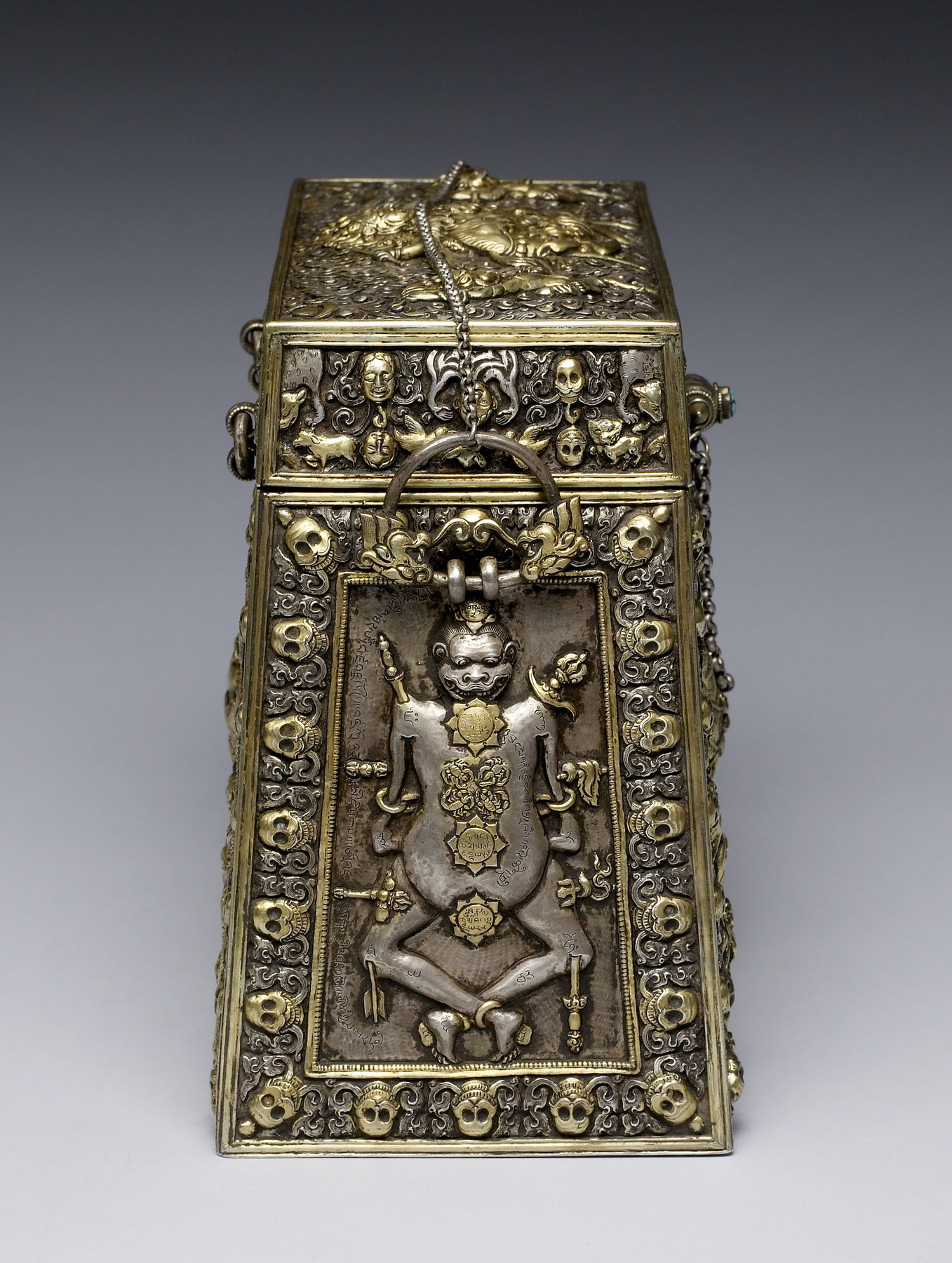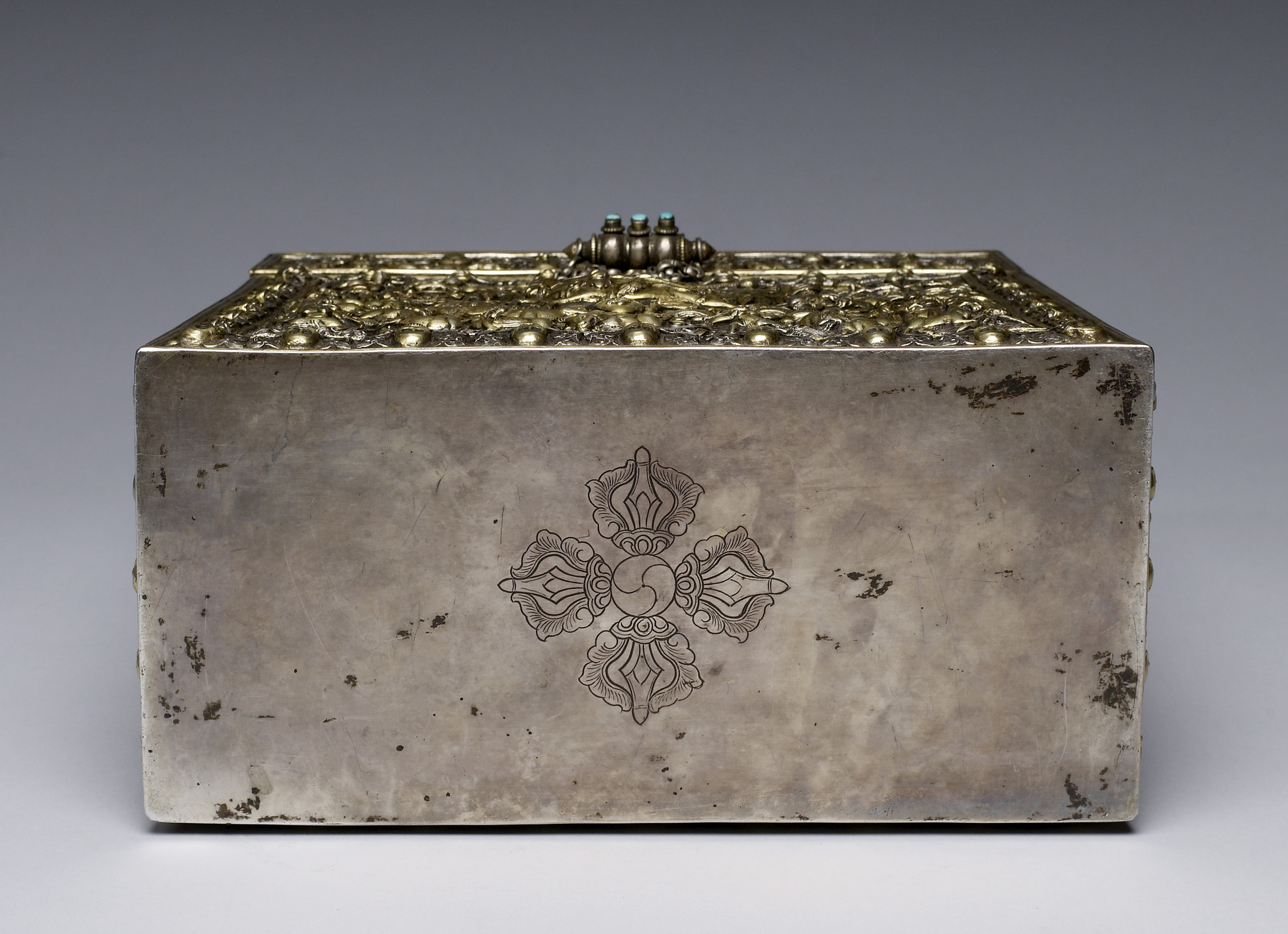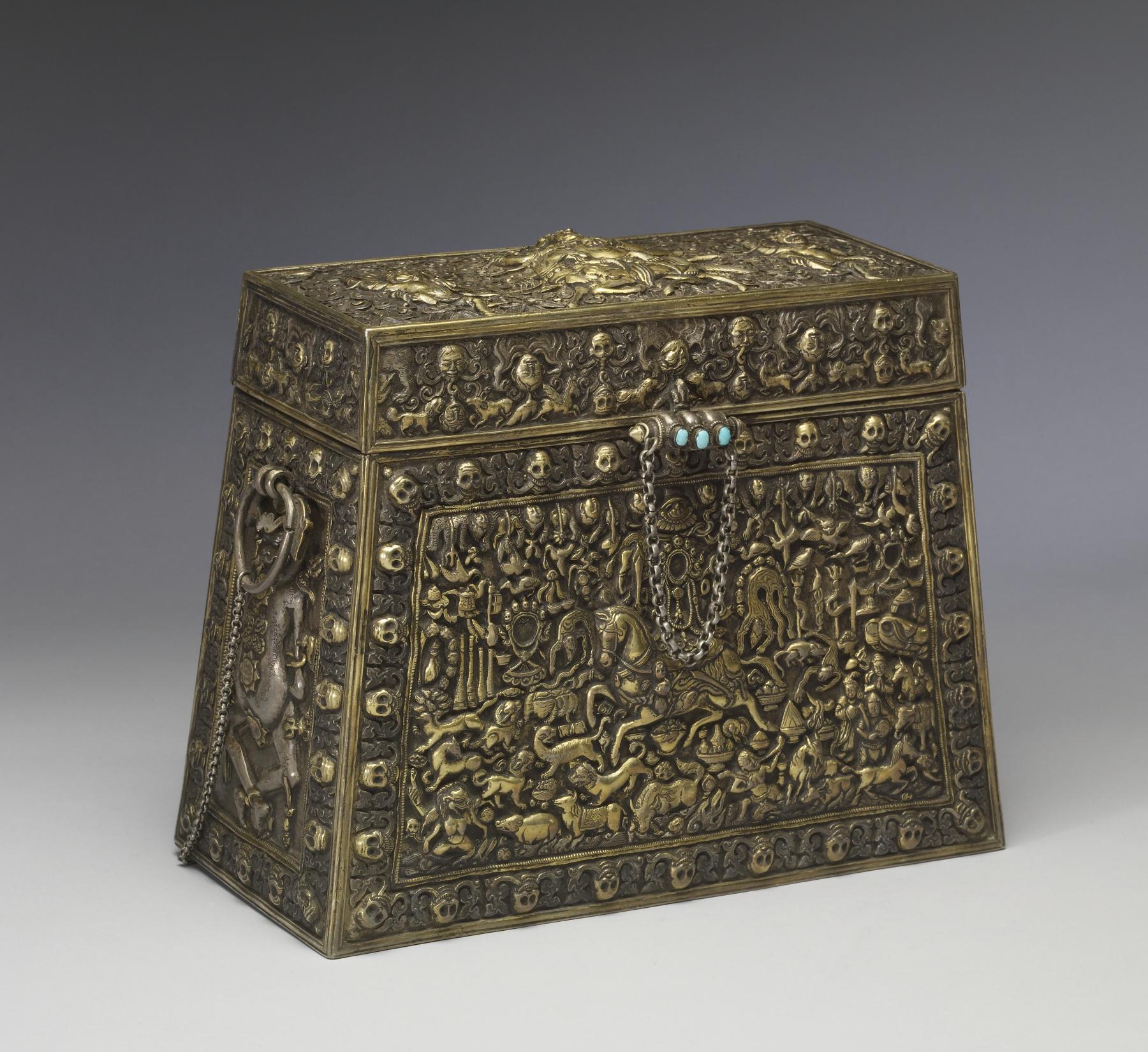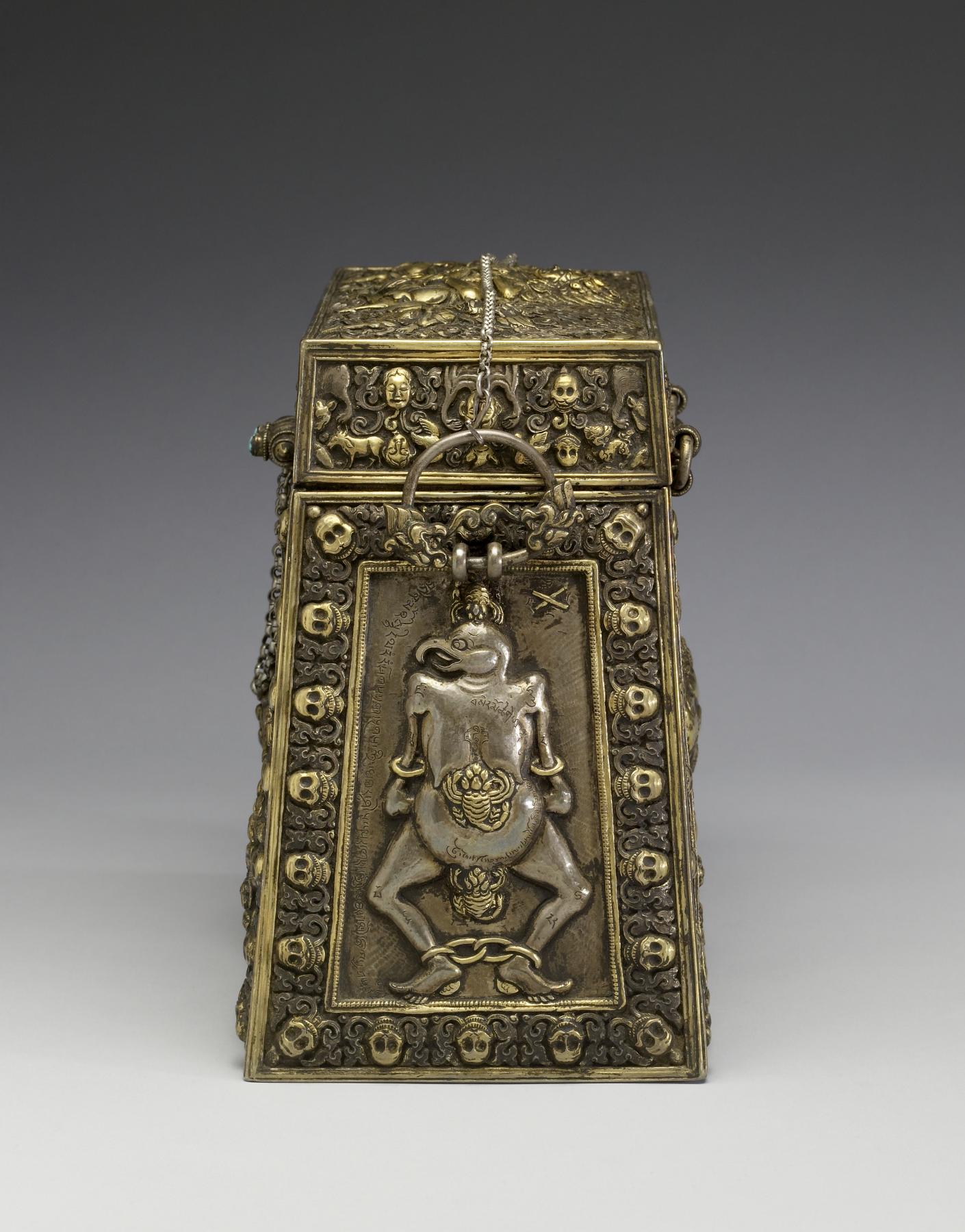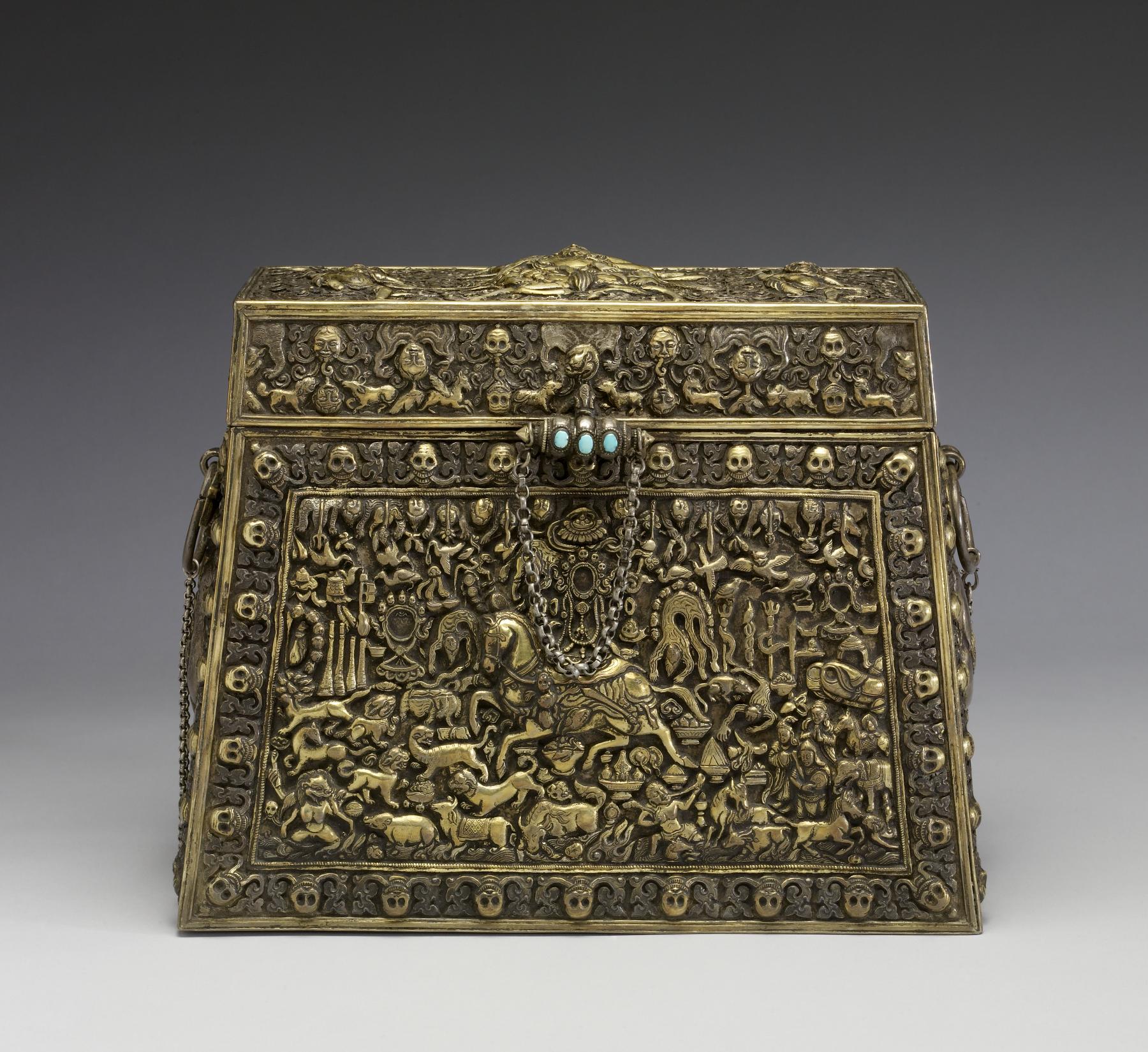Ritual Box
(India, Nepal, and Tibet)
The surfaces of this gilded silver and box are richly embellished with symbols and mantras associated with the destruction of malevolent spirits. On the front is a symbolic representation of the protective female deity Lhamo. The precise function of the box within a ritual context is unknown, but it may have served as a storage container for other esoteric objects used within a tantric ritual, such as inscribed prayers, images of deities, incense, crystals, herbs, soil, and pills made of ingredients chosen by a lama (religious teacher). The inclusion of skulls as border motifs and the manacled creatures at either end are suggestive of both protection of the contents and the use of the box in purifying rites or exorcisms.
The inscriptions include spells using Sanskrit words and Tibetan curses, such as, "May its voice sink in darkness and dissolve." Part of the ritual seems to have involved capturing the spirit, and part, subduing it. There may also be references to yogic activities, such as controlled-breathing exercises. The complexity of the decoration is indicative of a date in the 18th century, making this a relatively late example of the Tibetan tantric tradition.
This box is a masterpiece of silversmithing. The complex designs were hammered and worked into both sides of heavy sheets of silver, and the surface was decorated with two types of gilding. The larger figures were gilded by applying gossamer-thin sheets of pure gold directly to the silver. Other areas, notably the flames on the box’s lid, were gilded using a technique known as mercury amalgam or fire gilding, in which a mixture of gold and mercury is applied to the metal and the mercury is burned off, leaving behind a thin layer of gold. The mercury gilding blends softly into the silver, whereas the edges of the gold sheet are more clearly defined.
Provenance
Provenance (from the French provenir, 'to come from/forth') is the chronology of the ownership, custody, or location of a historical object. Learn more about provenance at the Walters.
Present in Kathmandu, Nepal; purchased by John and Berthe Ford, Baltimore, Winter 1983; given to Walters Art Museum, 2007.
Exhibitions
| 2001-2003 | Desire and Devotion: Art from India, Nepal, and Tibet in the John and Berthe Ford Collection. The Walters Art Museum, Baltimore; Santa Barbara Museum of Art, Santa Barbara; Albuquerque Museum, Albuquerque; Birmingham Museum of Art, Birmingham; Hong Kong Museum of Art, Hong Kong. |
Conservation
| Date | Description | Narrative |
|---|---|---|
| 8/1/2017 | Examination | Treated for exhibition |
| 8/1/2017 | Examination | A modern coating was reduced to make decoration more visible. Tarnish was reduce using a cosmetic sponge. |
| 8/3/2017 | Treatment | Cleaned for exhibition |
| 8/3/2017 | Treatment | The box is made of silver panels that are hammered, raised and chased and then soldered together. The corners are reinforced with extra pieces of silver from the interior. The box is partially gilded using two different methods of applying gold. The smaller details, such as the flames in the background, appear to be mercury or fired gilded. The larger figures in high relief are gilded by application of thin sheets of gold. The highpoints were lightly cleaned to make the figurative elements more readable and the gilding more visible. |
Geographies
Tibet (Place of Origin)
Measurements
H: 8 11/16 x W: 10 13/16 x D: 5 5/16 in. (22.1 x 27.5 x 13.5 cm)
Credit Line
Gift of John and Berthe Ford, 2007
Accession Number
In libraries, galleries, museums, and archives, an accession number is a unique identifier assigned to each object in the collection.
In libraries, galleries, museums, and archives, an accession number is a unique identifier assigned to each object in the collection.
57.2299

